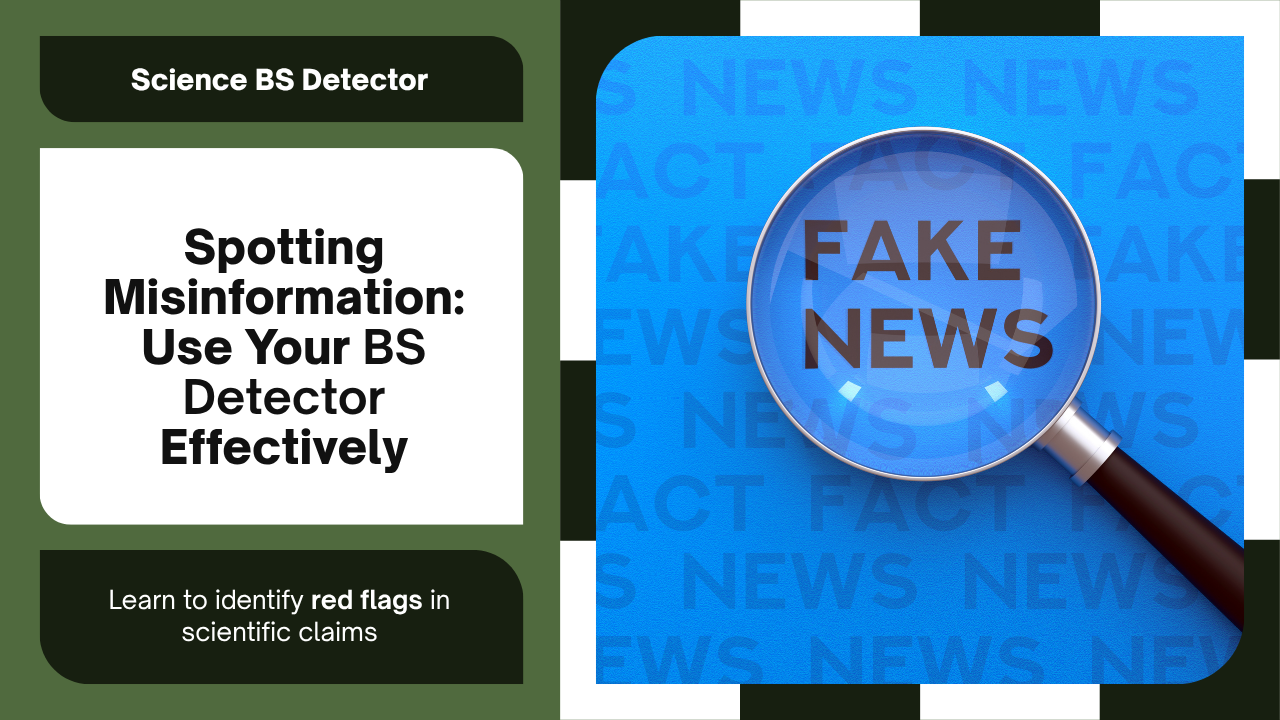You see it everywhere: “Scientists HATE this one weird trick!” or “New study PROVES everything you know about [insert topic] is WRONG!”
But here’s the thing—I used to fall for this stuff all the time.
I remember sharing an article about how microwaves “destroy food nutrients” without even checking if it was true. My mom called me out on it. Embarrassing? Absolutely. But it taught me something valuable: we all need better BS detectors.
So how do you separate legitimate science news from complete nonsense? You don’t need a PhD, just some healthy skepticism and a few tricks I’ve learned the hard way.
The Clickbait Circus
What screams “fake news”:
- ALL CAPS and excessive exclamation points
- Words like “BREAKTHROUGH,” “MIRACLE,” “SHOCKING,” “SCIENTISTS DON’T WANT YOU TO KNOW”
- Claims that one study “proves” or “disproves” everything we know
Real science doesn’t work like that. It’s more like… well, imagine trying to solve a 10,000-piece puzzle. You don’t suddenly find the one piece that makes the whole picture clear. You build it slowly, piece by piece.
Research shows that classic clickbait headlines often use hyperbolic and formulaic language to create information gaps that arouse curiosity, and more than half of misinformation experts agree that misleading but not outright false content counts as misinformation.
Legitimate researchers use careful language: “suggests,” “indicates,” “may contribute to.” If someone claims one study overturns decades of research? Yeah, that’s your first red flag.
Quick example: “SHOCKING: Coffee PROVEN to cure cancer!” vs. “Study suggests coffee consumption may be linked to reduced risk of certain cancers.”
See the difference? One sounds like a carnival barker. The other sounds like, you know, actual science.
The Vanishing Source Trick
Here’s where things get sneaky. You’ll see claims like “studies show…” but when you go hunting for the actual study? Good luck.
I’ve spent way too many evenings going down rabbit holes, clicking link after link, only to find they all lead back to the same blog post from 2003. No actual research in sight.
Red flags to watch for:
- Vague references to “European scientists” or “a major university”
- Links that lead to other blog posts instead of real research
- Sources that mysteriously don’t exist when you search for them
Your move: Can you actually find the study? Is it published somewhere legit? If you can’t trace the claim back to real research, treat it like that suspicious sushi at the gas station—probably best to pass.
Cherry-Picking Season (It’s Year-Round)
Oh, this one drives me nuts. It’s like judging a restaurant based on one Yelp review while ignoring the other 847 reviews.
Cherry-picking happens when people intentionally or unintentionally select evidence that fits their narrative while ignoring contradictory data. Science misinformation loves to grab one small, preliminary study and parade it around like it’s the final word. Meanwhile, there might be dozens of larger, better studies saying the complete opposite.
Here in Norfolk, we know something about weather patterns, right? You wouldn’t declare it’s always sunny here based on one nice day in February. Same logic applies to science.
Take the bias detection training quiz!
What to watch for:
- Focusing on tiny studies while ignoring larger ones
- Taking quotes completely out of context
- Conveniently forgetting to mention study limitations
Reality check: Science works through consensus. Research shows that disagreements across data sources can actually drive different conclusions about intervention efficacy, which is why looking at multiple studies together matters more than any single finding.
The Fake Expert Problem
This might be my biggest pet peeve. Just because someone has “Dr.” in front of their name doesn’t mean they know what they’re talking about outside their field.
I once saw a dentist giving definitive advice about climate change. Now, I trust my dentist with my teeth, but atmospheric science? Not so much.
Watch out for:
- Doctors commenting way outside their expertise
- Credentials from institutions you’ve never heard of (and Google hasn’t either)
- Experts with obvious financial conflicts they don’t mention
Quick check: Does this person actually research this topic? A simple Google Scholar search can tell you if they publish real work in the field. It takes two minutes and can save you from sharing nonsense.
Conspiracy Brain
Look, I get it. Sometimes it feels like powerful interests are hiding things from us. And occasionally, they are! But when someone claims that thousands of scientists worldwide are all in on some massive cover-up… come on.
Scientists are competitive. They love proving each other wrong. If there were easy ways to cure cancer or disprove climate change, researchers would be fighting to publish those findings, not covering them up. That’s how careers are made.
Red flags:
- Claims about widespread cover-ups by scientists
- “They don’t want you to know” language
- Dismissing all mainstream science as propaganda
Reality check: Science thrives on disagreement and new discoveries. The conspiracy would have to be impossibly huge and involve people who actually hate each other professionally.
What Actually Looks Legit?
After years of getting fooled (more than I’d like to admit), here’s what I look for now:
- Multiple studies from different research groups reaching similar conclusions
- Authors who admit what they don’t know and acknowledge limitations
- Clear information about who funded the research
- Careful, measured language about findings
- Links to actual research papers, not just press releases
It’s not as exciting as “SCIENTISTS DISCOVER ONE WEIRD TRICK,” but it’s how real knowledge gets built.
My Personal BS Detection Routine
Before I share anything science-related now, I ask myself:
- Who published this, and do they have a good track record?
- What are the author’s actual qualifications in this specific area?
- Can I find the original study, and does it actually say what this article claims?
- Does this contradict what most experts in the field believe? If so, why?
- Who benefits if I believe this information?
Honestly? I still mess up sometimes. Nobody gets it right every time. But I’m getting better at catching the obvious fakes.
When You’re Not Sure, Just Wait
Here’s something I’ve learned: real scientific breakthroughs don’t disappear overnight. If something is truly important, you’ll hear about it from multiple legitimate sources over weeks or months, not just in one viral Facebook post.
It’s okay to wait. It’s okay to say “I don’t know yet.” That’s actually pretty scientific thinking.
The Bottom Line
Science misinformation exploits our desire for simple answers and dramatic stories. But real science is messier than that. It’s uncertain, constantly evolving, and rarely gives us the clear-cut answers we want.
The best defense isn’t blind trust—it’s learning to ask better questions and being okay with complexity.
Remember: falling for misinformation doesn’t make you dumb. It makes you human. We all want to understand our world better. The trick is getting better at telling the real explanations from the fake ones.
Sources:
- Scott, K. (2023). “Deceptive” clickbait headlines: Relevance, intentions, and lies.
- Kupferschmidt, K. (2024). The five biggest challenges facing misinformation researchers. Science, 383(6689), 1394-1398.
- Mayo-Wilson, E., et al. (2017). Cherry-picking by trialists and meta-analysts can drive conclusions about intervention efficacy. Journal of clinical epidemiology, 91, 95–110. https://doi.org/10.1016/j.jclinepi.2017.07.014
- McGill Office for Science and Society. (2020). Cherry-Picking in the Era of COVID-19.
- ScienceUpFirst. (2024). Misinformer Tactic: Cherry Picking.
Got a piece of science misinformation you’d like us to investigate? Comment below—we love a good fact-checking challenge, and honestly, reader suggestions often lead to our best posts.


Leave a Reply